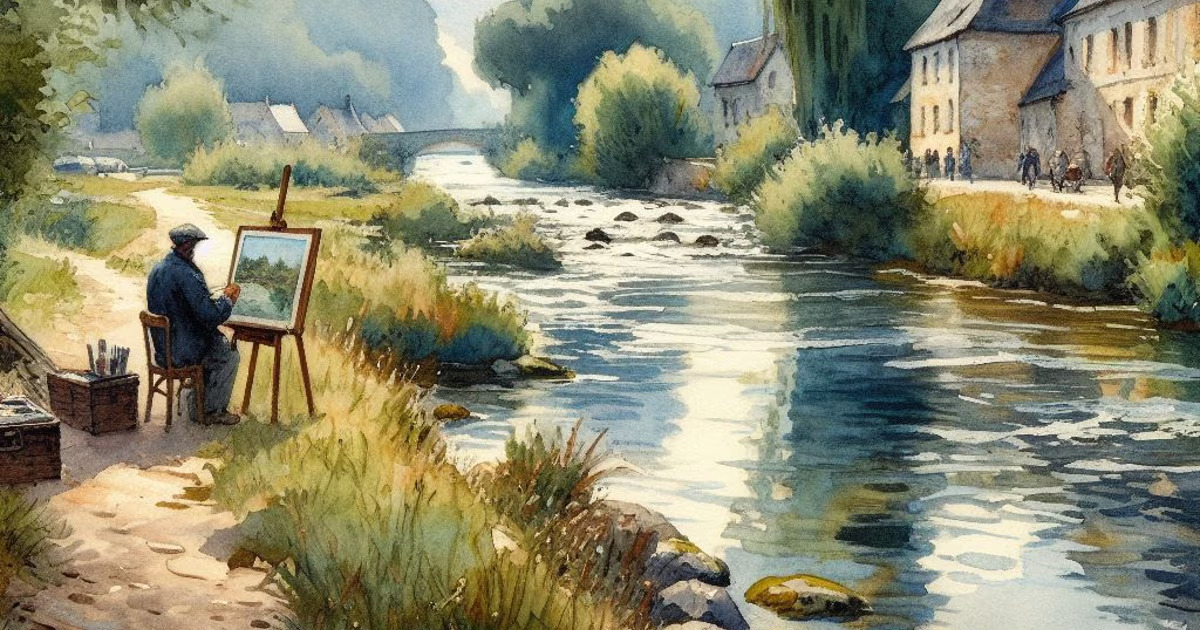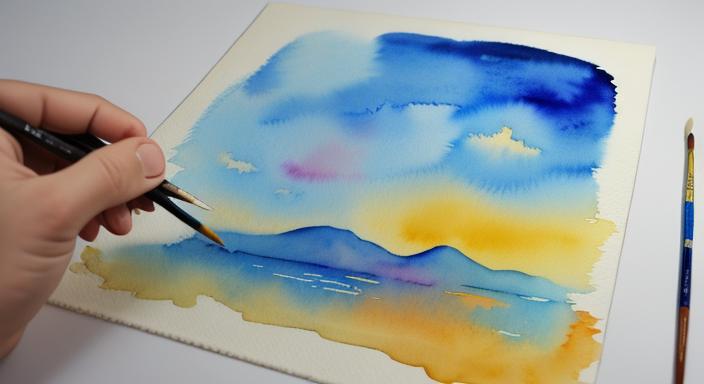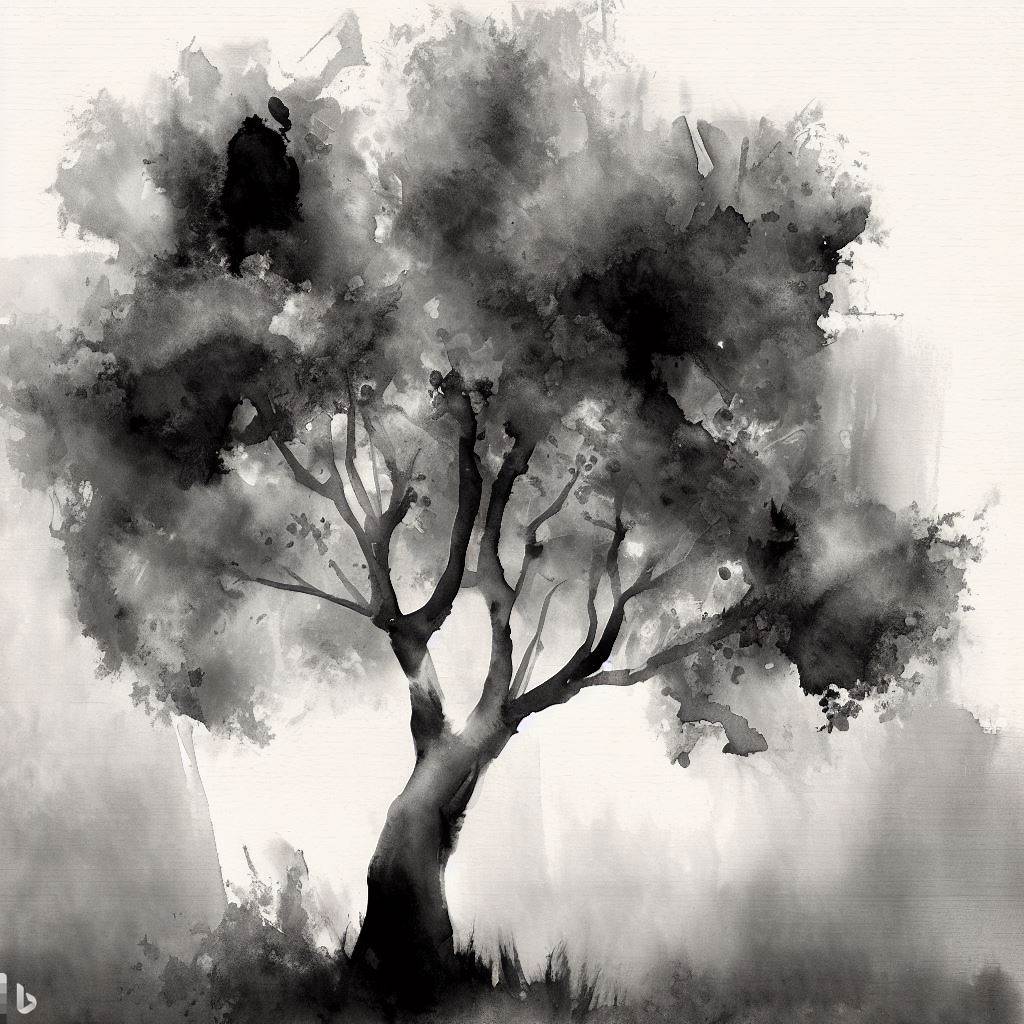Ever found yourself captivated by the hustle and bustle of city life, wishing you could freeze those moments in time? Have you dreamed of creating art that captures the essence of urban landscapes but felt overwhelmed by the complexity of cityscapes? Urban watercolor sketching might be the perfect solution you’ve been searching for.

Urban watercolor sketching is more than just painting buildings; it’s about capturing the pulse of a city, the fleeting moments of daily life, and the unique character of urban spaces. But where do you start? How can you translate the energy and complexity of city life onto paper with just a few quick strokes and washes?
Mastering Urban Watercolor Sketching Techniques
Urban watercolor sketching techniques are the key to creating vibrant, expressive cityscapes that capture the essence of urban life. These methods allow you to work quickly and spontaneously, essential skills when sketching in bustling city environments. Let’s explore some fundamental techniques:
- Gesture Sketching: Start with loose, quick lines to capture the overall shape and movement of a scene. This technique is perfect for sketching people and vehicles in motion.
- Perspective Shorthand: Develop a quick way to indicate perspective without getting bogged down in details. Use simple lines to suggest depth and distance.
- Value Studies: Create quick thumbnails focusing on light and shadow to establish the mood and composition of your sketch.
- Wet-in-Wet Washes: Apply broad strokes of diluted watercolor on damp paper to create atmospheric effects, perfect for suggesting distant buildings or moody skies.
- Dry Brush Textures: Use a brush with minimal water to add texture and detail to your urban elements, like brickwork or foliage.
These urban watercolor sketching techniques form the foundation of your city sketching toolkit. As you practice, you’ll develop your unique style and discover which methods best capture the urban scenes that inspire you.
The Art of Observation: Seeing the City Through an Artist’s Eye
Urban watercolor sketching isn’t just about technique; it’s about developing a keen eye for the unique character of city life. Train yourself to notice the interplay of light and shadow on building facades, the rhythm of pedestrians on a busy street, or the contrast between historic architecture and modern skyscrapers.

Here’s a simple exercise to sharpen your urban observation skills:
- Choose a busy city corner or plaza.
- Set a timer for 10 minutes.
- Sketch the scene, focusing on capturing the overall atmosphere rather than every detail.
- Repeat this exercise in different locations and times of day.
This practice will not only improve your urban watercolor sketching techniques but also enhance your ability to distill the essence of a cityscape into a quick sketch.
Creating an Urban Sketching Kit
To embark on your urban watercolor sketching journey, you’ll need a portable kit. Here’s a suggested list of essentials:
- A small watercolor sketchbook (140lb/300gsm paper)
- A compact set of watercolor paints
- Water brush or travel brushes
- Collapsible water container
- Pencil and eraser
- Fine-liner pen (waterproof)
- Folding stool or standing easel (optional)
Remember, the best kit is one you’ll actually carry with you. Keep it light and compact to ensure you’re always ready to sketch.
Overcoming Urban Sketching Challenges
Sketching in urban environments comes with its own set of challenges. Here are some common issues and how to overcome them:
- Crowds: Use them to your advantage by incorporating silhouettes or gestural figures to add life to your scene.
- Changing light: Work quickly to capture the essence of light, or return to the same spot at different times to create a series.
- Complex architecture: Simplify shapes and focus on capturing the overall impression rather than every detail.
- Weather: Embrace the elements! Rain and mist can create beautiful atmospheric effects in your sketches.
These challenges are opportunities to develop your urban watercolor sketching techniques and create unique, expressive works.
Combining Line and Wash: The Power of Mixed Media Urban Sketching
Urban watercolor sketching often benefits from a combination of line work and watercolor washes. Experiment with different approaches:
- Start with a loose pencil sketch, add ink lines, then apply watercolor washes.
- Begin with watercolor shapes and add line work on top for definition.
- Use water-soluble ink for line work that blends with your washes.
This combination of line and wash creates dynamic, expressive urban sketches that capture both detail and atmosphere.
The Urban Color Palette: Capturing City Moods
Cities have their own unique color palettes that change with the time of day, weather, and seasons. Here’s a quick guide to urban color moods:
| Time/Condition | Color Palette | Mood |
|---|---|---|
| Early Morning | Cool blues, soft pinks | Quiet, anticipation |
| Midday | Bright yellows, stark shadows | Busy, energetic |
| Sunset | Warm oranges, purples | Romantic, reflective |
| Rainy Day | Muted greys, splashes of color | Moody, introspective |
Experiment with different color combinations to express the changing moods of the city throughout the day and seasons.
Embracing Imperfection: The Beauty of Quick Urban Sketches
One of the most liberating aspects of urban watercolor sketching is embracing imperfection. Unlike studio painting, urban sketching is about capturing the energy and essence of a scene quickly. Here are some tips for loosening up your style:
- Use larger brushes to avoid getting caught up in details.
- Set time limits for each sketch to prevent overworking.
- Focus on capturing the mood and atmosphere rather than photorealistic accuracy.
- Allow your watercolors to blend and bleed naturally, creating happy accidents.
Remember, the goal is to capture the spirit of the city, not create a perfect representation.
From Sketchbook to Gallery: Sharing Your Urban Watercolors
While urban watercolor sketching is often a personal practice, sharing your work can be incredibly rewarding. Consider:
- Starting an Instagram account dedicated to your urban sketches.
- Joining urban sketching groups for meetups and sketch walks.
- Participating in online urban sketching challenges.
- Creating a travel journal or blog featuring your city sketches.
Sharing your work not only motivates you to continue practicing but also connects you with a global community of urban sketchers.
The Journey Continues: Developing Your Urban Sketching Style
As you delve deeper into urban watercolor sketching, you’ll discover that it’s a journey of constant discovery and growth. Each city, each street corner offers new challenges and inspirations.
Keep experimenting with different urban watercolor sketching techniques, subjects, and styles. Over time, you’ll develop a unique visual language that authentically expresses your perspective on urban life.
Remember, the beauty of urban watercolor sketching lies not in perfection, but in the honest, raw capture of city moments. So grab your sketchbook, find a busy street corner, and start sketching. The city is waiting to be seen through your eyes.
Relevant Resources:
- Urban Sketchers – A global community of artists who practice on-location drawing
- Liz Steel’s Urban Sketching Blog – Tips and inspiration from a renowned urban sketcher
- The Urban Sketching Handbook: Architecture and Cityscapes by Gabriel Campanario
clrPer


